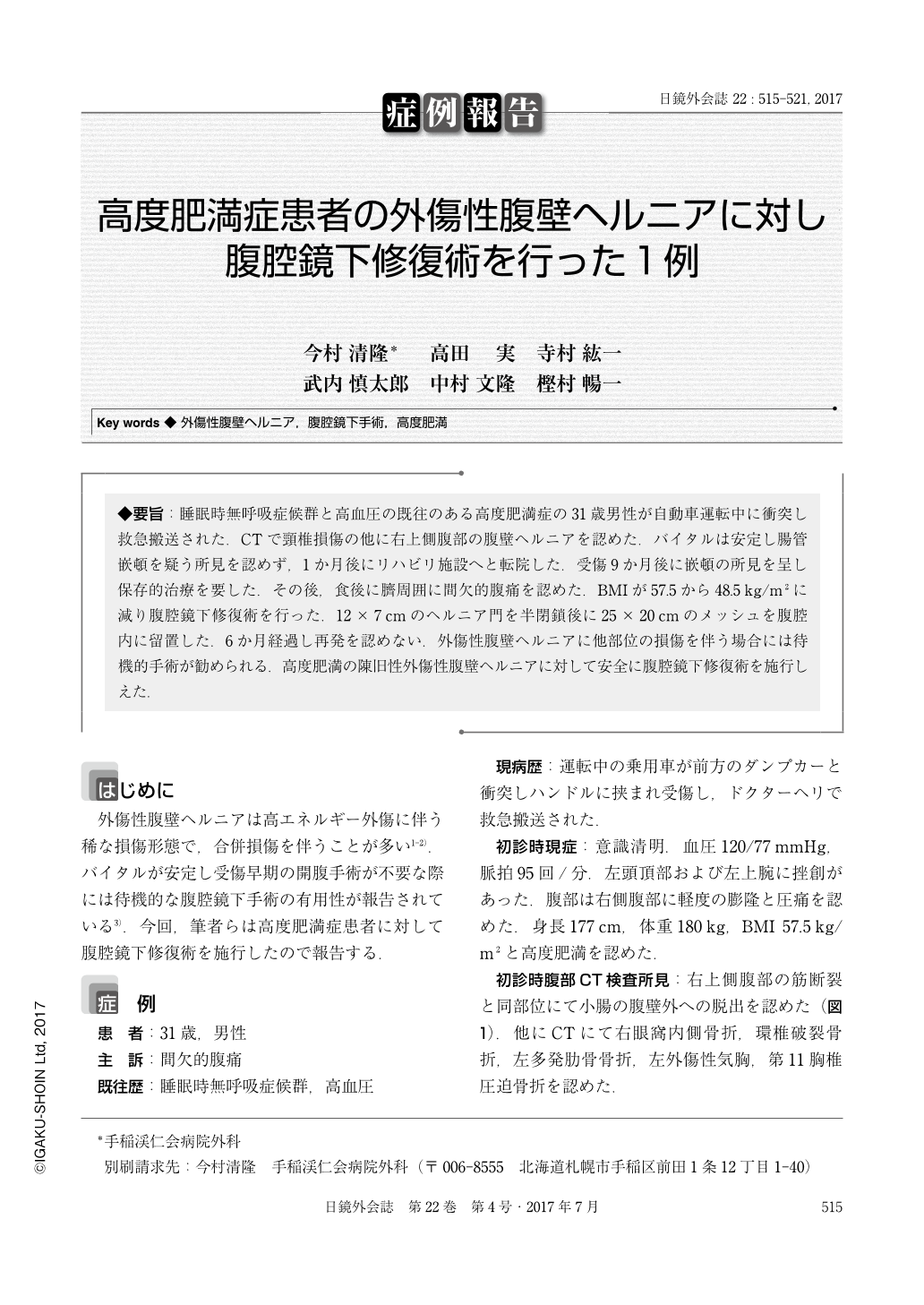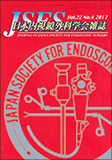Japanese
English
- 有料閲覧
- Abstract 文献概要
- 1ページ目 Look Inside
- 参考文献 Reference
◆要旨:睡眠時無呼吸症候群と高血圧の既往のある高度肥満症の31歳男性が自動車運転中に衝突し救急搬送された.CTで頸椎損傷の他に右上側腹部の腹壁ヘルニアを認めた.バイタルは安定し腸管嵌頓を疑う所見を認めず,1か月後にリハビリ施設へと転院した.受傷9か月後に嵌頓の所見を呈し保存的治療を要した.その後,食後に臍周囲に間欠的腹痛を認めた.BMIが57.5から48.5kg/m2に減り腹腔鏡下修復術を行った.12×7cmのヘルニア門を半閉鎖後に25×20cmのメッシュを腹腔内に留置した.6か月経過し再発を認めない.外傷性腹壁ヘルニアに他部位の損傷を伴う場合には待機的手術が勧められる.高度肥満の陳旧性外傷性腹壁ヘルニアに対して安全に腹腔鏡下修復術を施行しえた.
This is a case of a 31-year-old, morbidly obese man with a history of obstructive sleep apnea and hypertension. He was presented to the emergency department with a traumatic abdominal wall hernia following a motor vehicle accident. A CT scan revealed a right upper-flank hernia and other multiple injuries, including a cervical spine fracture. As his vital signs were stable and there was no evidence of bowel incarceration, we decided to take a non-surgical approach. He remained in the hospital for one month, and after rehabilitation, he was able to return to his normal activities. Unfortunately, eight months later he developed signs of incarceration, but it resolved with a nasogastric tube and bowel rest. After this episode, he developed an intermittent periumbilical pain after meals, and at that point, we felt that surgical repair was necessary. Fortunately, the patient was able to decrease his perioperative risk by lowering his BMI from 57.5 to 48.5 kg/m2. We performed a laparoscopic repair to close the 12 × 7 cm hernia orifice using a 25 × 20cm synthetic mesh placed intraperitoneally. Ten days after the operation, the patient was discharged and remained without any symptoms or recurrence at the 6 month follow-up. If concomitant injuries accompany a traumatic abdominal wall hernia, delaying the repair may be appropriate in selected, stable patients. We were able to perform laparoscopic hernia repair of a traumatic abdominal wall hernia in a morbidly obese patient.

Copyright © 2017, JAPAN SOCIETY FOR ENDOSCOPIC SURGERY All rights reserved.


